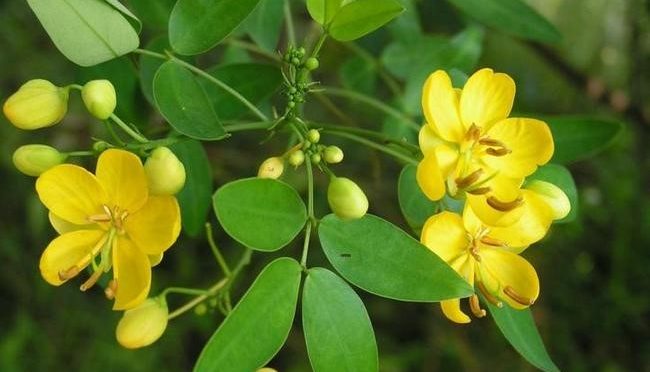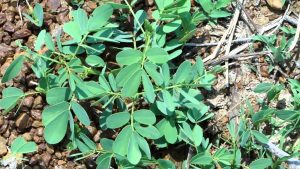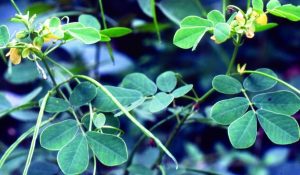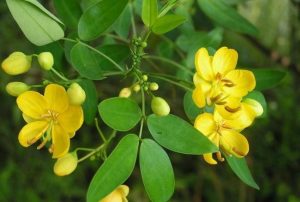| Class and Class No. | 3A ( 27 ) |
| Name: | Wong Yin Chun |
| Year: | 2017-2018 |
Instruction: Type in useful information in the space provided.
| Chinese name: | 決明子 |
| Family Name (科名): | 蘇木科Caesalpiniaceae |
| Scientific name (學名): | Cassia tora |
| Common name (俗名): | tora |
| 習性:
決明子非常容忍,容易長大。 在印度,它是一種荒地雨季雜草,通常的開花時間是在十月至二月期間的季風雨後。 決明子在海拔1800米的干燥土壤中生長。 種子可以存活長達二十年。 下雨後,每平方米將有多達1000棵植物出現。 種子一旦成熟,就會在太陽下收集並乾燥。 在南亞,它通常在七月到十月的旱季中消失。 |
Growth habit:
Casia tora is considered an annual weed, is very stress tolerant, and is easily grown. In India, it occurs as a wasteland rainy season weed and its usual flowering time is after the monsoon rains, during the period of October to February. Cassia tora grows in dry soil from sea level up to 1800 meters. The seed can remain viable for up to twenty years. Up to 1000 plants can emerge per square meter following rain. Once the seed has matured, it is gathered and dried in the sun. In South Asia, it usually dies off in the dry season of July–October. |
| 葉:
由多數羽狀葉組成,小葉大部分具有三對相反的對,其形狀倒圓並具圓形尖端。 葉子長到3-4.5厘米長。 |
Leaf:
consists of alternative pinnate leaves with leaflets mostly with three opposite pairs that are obovate in shape with a rounded tip. The leaves grow up to 3–4.5 centimeters long. |
| 花:
花朵成對出現在葉片的腋下,有五片花瓣,顏色為淡黃色。
|
Flower:
The flowers occur in pairs in axils of leaves with five petals and pale yellow in colour. |
| 果:
線形的,不好的,被微柔毛的,短的,具柄的,扁平的,壓縮的。 |
Fruit:
Linear, subtetragonous, puberulous, short, stipitate, flat, compressed. |
| 性味功能:
味甜,味鹹,味微寒,與肝,腎,大腸通道有關。. |
Properties:
Sweet, bitter and salty in flavor, slightly cold in nature, it is related to the liver, kidney and large intestine channels. |
| 主治:
這種植物的葉子,種子,甚至根部含有藥用價值,通過它可以治愈許多皮膚問題。主要優選用作為用於皮膚問題的藥物和軟膏以及製備其他藥物的緩瀉劑。 決明子是其中一個被發現支持治療皮膚問題,如癬,麻風病,皮膚感染等,除此之外,它也用於治療肝臟疾病。 |
Treats:
The leaves, seed and even root of this plant is found to contain medicinal value through which it helps to cure many skin problems. Mainly preferred as a laxative for drugs and ointments prepared for skin problems and in the preparation of other medications as well. Cassia tora is one among them that was found to be supporting in curing skin problems like ringworm, leprosy, skin infections, etc. Apart from that it is also used for treating liver disorder. |
| 知多一點點: | More to learn:
The primary chemical constituents of the seed include cinnamaldehyde , gum, tannins , mannitol , coumarins and essential oils. |
Previous Scientific Research (if any):
| 1. |
Useful Link:
| Topics | Hyperlinks |
| General information on Cannabis sativa
|
https://en.wikipedia.org/wiki/Senna_tora
|
| About Cannabis sativa |
|
| About Cannabis sativa |
https://hort.purdue.edu/newcrop/CropFactSheets/cassia.html
|
Questions:
| (Beginner) | Guidelines:
Answer can be directly harvested from the information given. e.g. Q1 Cassia tora can treat what kind of disease? Answer: It use to treat skin problems such as ringworm, leprosy. |
| (Elementary) | Guidelines:
Answer can be obtained from the information given and the external links. e.g. Q2 Where can we find Cassia tora? Answer: Cassia tora is found in many parts of the world. It grows abundantly in parts of Afghanistan, India, Nigeria, China, Pakistan, Myanmar, Nepal and Bhutan. It is also grown and cultivated areas in the Himalayas at the elevation of 1400 meters in Nepal. It is distributed throughout India, Sri Lanka, West China and the tropics, particularly in forest and tribal areas. |
| (Advanced) | Guidelines:
Question requires higher order thinking. More information should be found from external links or reference before answering the questions. Q3 What may be the potential industrial use of Cassia tora in Indian Sub-continent? Answer: As such Cassia tora has limited industrial uses. However, it can used as greenmanure, may be by drying and making briqutes as concentrated greenmanure. |




